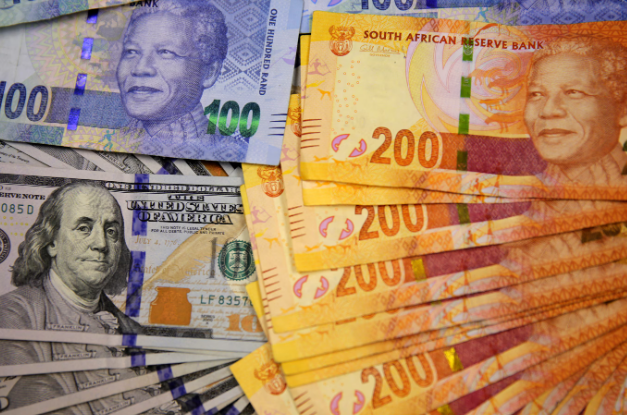The South African rand strengthened further against a weaker U.S. dollar on Monday, continuing a period of significant volatility driven by U.S. President Donald Trump’s trade war and concerns that a key coalition partner might leave South Africa’s government.
By 0638 GMT, the rand was trading at 18.9675 against the dollar, marking a gain of about 1% from its previous close.
Meanwhile, the dollar was roughly 0.6% weaker against a basket of other currencies.
“The markets were spooked and confused last week. This is set to continue this week,” said Adam Phillips, a treasury specialist at Umkhulu Treasury.

The rand, which is sensitive to risk, has fluctuated sharply due to Trump’s shifting tariff policies, which have fueled tensions between the U.S. and China, the world’s second-largest economy.
Over the weekend, Trump announced that smartphones and other electronics predominantly imported from China would be exempt from his tariffs, signaling a growing recognition of the potential impact these measures could have on consumers. However, U.S. Commerce Secretary Howard Lutnick clarified that the exemption would be temporary.
Local political developments in South Africa have also influenced the rand’s movement. Tensions have been rising within the country’s coalition government, particularly between the African National Congress (ANC) and the Democratic Alliance (DA), the two largest parties. Their dispute over the national budget has led to speculation that the DA might either exit or be forced out of the Government of National Unity.
The ANC and DA met on Saturday to discuss the deadlock. While neither party provided a detailed account of the talks, both described them as constructive.
Should the ANC and DA resolve their differences, analysts predict that the rand could strengthen further.
“Continue to expect big moves, although maybe not as big as last week,” Phillips noted.
South Africa’s benchmark 2030 government bond also saw improvement early on Monday, with the yield dropping 8 basis points to 9.225%.


